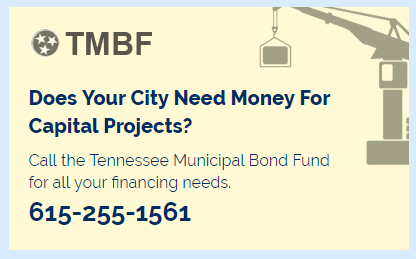Summary and Status of Annexation and PC1101 Bills
Several bills were introduced in 2015 to address issues unresolved in the annexation by referendum law passed in 2014. The status of those bills is listed below with analysis and links to documents.
HB608 Cleanup
STATUS: Enacted into law. Public Chapter 512 of 2015
As amended, this is simply a cleanup bill intended to eliminate outdated references to annexation by ordinance necessitated by the change adopted last year, which requires annexation be conducted only by referendum or written consent.
As further amended, permits municipalities within Williamson County to annex noncontiguous property provided property owner consents to the annexation and the property is to be used either for commercial, industrial or residential purposes. In addition, the city and the county must enter into an interlocal agreement outlining the provision of emergency services and the maintenance of the main route of ingress/egress between corporate limits and the noncontiguous area.
HB662 - Defining "Primarily Used for Agricultural Purposes"
STATUS: Passed Senate State and Local Government Committee and pending Senate Calendar Committee. Passed House Local Government Committee and action deferred to 2016 in House Finance Committee
Under legislation adopted in 2014, "property being used primarily for agricultural purposes" may only be annexed with the consent of the owner. In other words, such property may not be included in any proposed territory for annexation that is submitted for referendum.
TML has argued that the term "property being used primarily for agricultural purposes" is not defined currently and no such definition was included in the law that passed in 2014. As such, it is necessary to clarify this term for the benefit of owners, cities and counties in the hope of avoiding costly and lengthy litigation. Moreover, clarity is necessary to ensure that this special consideration intended for genuine agricultural and timber operations is not abused by other property owners desiring to avoid inclusion in a referendum.
Problems with "primarily used" amendment (Click to Download)
The amendment defines "property being used primarily for agricultural purposes" as property that satisfies any one of four conditions, listed below.
1. The property qualifies as greenbelt agricultural or forest land.
2. The property meets the qualification of greenbelt agricultural or forest land except for the minimum acreage requirement.
3. The owner or operator of the property is a "qualified farmer" or "qualified nurseryman," as defined in 67-6-207(e)(4). Under this provision, an owner or operator of a property qualifies for the special consideration afforded to "property used primarily for agricultural purposes" if that owner or operator files any of the following schedules or forms:
4. The property meets the definition of agriculture as defined in 1-3-105.
These four conditions are analyzed in more depth here (Click to Download)
Rep. Sargent has offered an amendment which addresses many of TML's concerns by doing the following:
- Seeks to avoid confusion and conflict, prevent costly litigation and preserve the original intent of the language adopted by the General Assembly in 2014
- Will address a potential problem that would permit an owner to “game” the law and benefit from the special treatment that was intended to be limited to real farms and forest land.
- Simply adds the phrase “property thats principal use is agriculture as defined in 1-3-105” to Section 1 of Representative Carter’s language.
Property would qualify for the special treatment reserved for bona fide farms and forestry operationsunder the referendum bill we adopted in 2014 if it satisfied the following: 1.The principal use of the property is agriculture, AND 2. The property satisfies one of the four conditions provided in Representative Carter’s language. This amendment ensures the original intent is preserved by limiting the special treatment to just those properties whose chief, main or principal use is agriculture or forestry.
Reivew the amendment language and what it covers (Click to Download)
HB778 - Qualified Voters in an Annexation Referendum
STATUS: Passed Senate State and Local Government Committee. Defeated in House Finance Committee.
As amended, this bill provides that the qualified voters and nonresident property owners within the territory proposed for annexation may vote in an annexation referendum.
The bill defines a nonresident property owner as either:
- An individual (or group of individuals) that owns property in the territory but resides outside the territory and is a qualified Tennessee voter.
- An individual with an ownership interest in a sole proprietorship, partnership, association, closely held corporation, limited liability corporation, limited partnership, or any other business entity organized under the laws of this state. Publicly traded companies and foreign companies organized under laws other than the laws of Tennessee are not eligible to vote as nonresident property owners.
The bill further limits nonresident property owners to 2 votes per individual parcel.
HB779 - Deannexation and Noncontiguous Annexation
STATUS: Passed Senate State and Local Government Committee. Deferred to 2016 in House Finance Committee.
Chart of Deannexation Laws in Other States (Click to Download)
Analysis of State by State Deannexation Laws (Click to Download)
Big Picture Questions (Click to Download)
In-depth Analysis of Deannexation Issues (Click to Download)
Summary of issues:
Noncontiguous Annexation
A municipality may annex noncontiguous territory by resolution provided the following criteria are satisfied:
1. The territory annexed is either owned by one or more governmental entities or will be used for industrial, commercial or residential purposes;
2. The owner or owners of all the property in the territory provide written consent; and
3. The municipality must prepare a plan of services for the territory in cooperation with the county and enter into an interlocal agreement to provide emergency services for any interceding properties and to maintain roads and bridges comprising the primary route to the area thus annexed as the municipality and county deem necessary.
Any noncontiguous territory annexed by a city may not be used to establish contiguity for future annexations.
Municipal Deannexation of Streets and other Public Ways of Travel
As amended, any streets or roads deannexed by a municipality on or after May 1, 1998, the municipality must submit a map of the deannexed street or road to the commissioner of finance and administration within 6 months of the effective date. Within one year of the receipt of such submission, the commissioner must revise and reallocate any funding previously distributed to the county that took receipt of the street or road following deannexation for improvement or maintenance of streets or roads.
As amended, no municipality may deannex territory containing a street, highway, avenue, boulevard, publicly-owned right-of-way, bridge, tunnel, public, parking area, or any other public way dedicated to public use and maintained for general public travel without approval by a 2/3 vote of the county legislative body.
Municipal-Initiated Deannexation
As amended, any municipality may contract its limits within a given territory (deannex), provided that it is approved by a majority of voters.
Voter-Initiated Deannexation
As amended, upon receipt of a petition of 10% of the registered voters residing in a territory previously annexed by ordinance upon the initiative of the city on or after May 1, 1998, the county election commission must hold a referendum of the voters in the territory to coincide with the next citywide or countywide election.
The territory designated for deannexation must be the same territory delineated in the initial annexation ordinance - "Go out as you came in."
Prior to such a referendum, a city may, by resolution, exclude any commercial or industrial properties located within the territory.
If a majority of voters residing within the territory approve the referendum, then the deannexation becomes effective after 30 days. If a majority of voters fail to approve the deannexation, then no further referendum may be held for the territory.
Voter-initiated annexation is repealed on May 16, 2021.
The municipality may continue to levy and collect taxes on property in the excluded territory to pay the excluded territory's proportion of any debt contracted prior to the exclusion upon a showing that the debt arises out of public improvements made to the deannexed territory.
Donut Holes 12 of the 26 states that permit voter-initiated deannexation in any form expressly preclude any areas that would result in the creation of a donut hole.
Other states’ laws address concerns regarding donut holes by limiting annexation only to those areas that are undeveloped, unplatted or agricultural in excess of certain qualifying acreage.
Should Tennessee law allow for deannexations that result in the creation of a donut hole?
HB780 - Growth Plans, Contracting UGBs, JECDBs
STATUS: Passed Senate State and Local Government Committee. Pending Senate Calendar Committee. Passed House Local Government and Finance Committees. Held on House Desk on January 12, 2016.
As amended, this bill includes the recommendations of TACIR concerning issues relating to aspects of PC1101.
Required Review, Readopt or Revise Growth Plan
Before July 1, 2018, the county mayor must reconvene or reestablish the coordinating committee for the purpose of reviewing and either readopting or revising the county growth plan.
At least once every 5 years thereafter, the county mayor must reconvene or reestablish the coordinating committee for the purpose of reviewing and either readopting or revising the county growth plan.
After July 1, 2018, eligibility for the loan and grant programs will lapse for those cities and counties with growth plans that are more than 5 years old. Eligibility will be restored only upon adoption of a growth plan. Cities and counties are subject to loss of eligibility for the following programs:
1. Tennessee housing development agency grant programs;
2. Community development block grants; 3.Tennessee industrial infrastructure program grants; 4. Industrial training service grants; 5. Intermodal Surface Transportation Efficiency Act funds or any subsequent federal authorization for transportation funds; and 6. Tourism development grants.
The requirements concerning reviewing, readopting and revising growth plans do not apply in any county with a population, according to the most recent decennial census, that is within 5% and 2,500 of its population in the preceding decennial census. However, the county mayor of such a county must reconvene the coordinating committee with one year of each future decennial census to review and revise or readopt the growth plan within 3 years or eligibility for the loans and grant programs listed above shall lapse.
Amending Growth Plans
As amended, any municipal or county mayor may propose an amendment to the growth plan by filing notice with the county mayor and the mayor of each city in the county. The county mayor shall take appropriate action to reconvene or reestablish the coordinating committee within 60 days of the receipt of such notice. It is the duty of the coordinating committee to submit the proposed amendment with its recommendation either for or against the amendment to the county legislative body and the governing bodies of each city in the county for consideration within 6 months.
Contracting UGBs
Under the amendment, a city seeking to retract its urban growth boundary may accomplish this aim without reconvening or reestablishing the coordinating committee, provided such contraction does not affect any other city. This may be accomplished by submitting the change to the county legislative body for approval and to the governing body of the proposing city for approval or disapproval within 6 months of the date the county mayor receives notice of the desired change.
Changes to JECDBs [Following provisions deleted by amendment]
The county and the cities of the county may, by interlocal agreement, designate the coordinating committee as the joint economic community development board, provided it complies with all the requirements of JECDBs.
Currently, JECDBS are required to meet at least 4 times annually. Under the amendment, JECDBs must meet as often as necessary, provided that the board meets at least once annually.
The amendment also permits the JECDB to assume the powers and authority granted to an industrial development corporation by agreement of all cities in the county.



